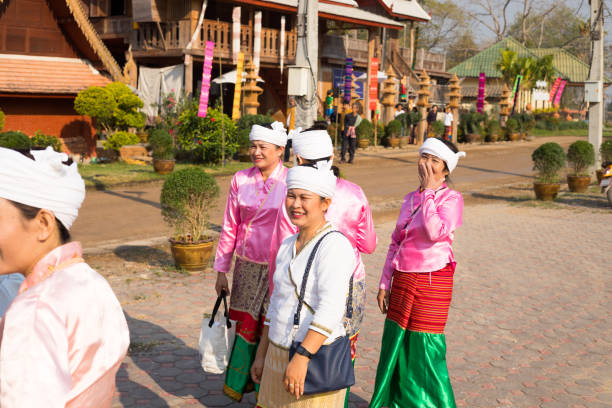Local Traditions
Local Cultural Traditions: Explore the Unique Practices and Heritage of Your Region
Understanding and appreciating local cultural traditions enriches our lives and deepens our connection to the communities we are part of. From ancient customs to modern festivals, each region boasts a tapestry of practices and heritage that reflect its history, values, and unique identity. Here’s an exploration of various local cultural traditions across different regions, highlighting practices that celebrate and preserve cultural heritage.
1. New Orleans Mardi Gras (USA)
1.1. Overview
- Location: New Orleans, Louisiana.
- Timing: Typically held in February or March, culminating on Fat Tuesday.
- Activities: Parades, masquerade balls, music, and elaborate costumes.
1.2. Highlights
- Parades: Featuring colorful floats, themed costumes, and live music.
- Cuisine: Traditional foods like King Cake, jambalaya, and gumbo.
- Traditions: Beads and trinkets thrown from floats, the “Krewe” organizations.
1.3. Cultural Significance
- History: Reflects a blend of French, Spanish, and Creole influences.
- Community: A major cultural event that fosters local pride and unity.
2. Diwali (India)
2.1. Overview
- Location: Celebrated across India and in Indian communities worldwide.
- Timing: Usually in October or November.
- Activities: Lighting lamps, fireworks, feasting, and religious ceremonies.
2.2. Highlights
- Festive Lights: Homes and streets adorned with oil lamps and lights.
- Rituals: Worship of the goddess Lakshmi, symbolizing wealth and prosperity.
- Food: Special sweets like gulab jamun, ladoos, and samosas.
2.3. Cultural Significance
- Religious Importance: Represents the victory of light over darkness and good over evil.
- Unity: A time for family gatherings and community celebrations.
3. La Tomatina (Spain)
3.1. Overview
- Location: Buñol, Valencia.
- Timing: Held on the last Wednesday of August.
- Activities: Participants throw tomatoes at each other in a massive food fight.
3.2. Highlights
- Tomato Fight: A lively and messy event where participants engage in a friendly tomato battle.
- Music and Festivities: Preceded by parades and street parties.
3.3. Cultural Significance
- Origins: Dates back to a local tradition in the 1940s and became an official festival in 1957.
- Fun and Community: Emphasizes fun, camaraderie, and community spirit.
4. Hanami (Japan)
4.1. Overview
- Location: Celebrated nationwide in Japan.
- Timing: Occurs during the cherry blossom season, typically in March or April.
- Activities: Viewing cherry blossoms, picnicking, and traditional performances.
4.2. Highlights
- Cherry Blossom Viewing: People gather under blooming cherry trees to appreciate the fleeting beauty of the blossoms.
- Picnics: Families and friends enjoy outdoor meals and festivities.
2.3. Cultural Significance
- Symbolism: Cherry blossoms symbolize the transient nature of life and beauty.
- Social Tradition: A cherished tradition that brings people together to enjoy nature.
5. Oktoberfest (Germany)
5.1. Overview
- Location: Munich, Bavaria.
- Timing: Runs from late September to the first weekend in October.
- Activities: Beer tents, traditional Bavarian food, music, and folk dances.
5.2. Highlights
- Beer Tents: Large tents serving a variety of German beers, traditional dishes like pretzels and sausages.
- Traditional Dress: Attendees often wear lederhosen (leather shorts) and dirndls (traditional dresses).
5.3. Cultural Significance
- History: Originated as a royal wedding celebration in 1810 and has evolved into the world’s largest beer festival.
- Cultural Pride: Celebrates Bavarian culture and hospitality.
6. Day of the Dead (Mexico)
6.1. Overview
- Location: Celebrated throughout Mexico, especially in Oaxaca and Mexico City.
- Timing: November 1st and 2nd.
- Activities: Altars, offerings, and processions honoring deceased loved ones.
6.2. Highlights
- Altars (Ofrendas): Decorated with photos, mementos, and favorite foods of the deceased.
- Cultural Symbols: Sugar skulls, marigold flowers, and traditional music.
6.3. Cultural Significance
- Tradition: Combines indigenous traditions with Catholic influences, celebrating life and death as interconnected.
- Community: A time for families to come together to remember and celebrate their ancestors.
7. Carnaval de Québec (Canada)
7.1. Overview
- Location: Quebec City, Quebec.
- Timing: Held in January and February.
- Activities: Ice sculptures, parades, and traditional winter sports.
7.2. Highlights
- Bonhomme Carnaval: The festival’s mascot, a giant snowman who leads the celebrations.
- Activities: Snow sculptures, ice canoe racing, and outdoor concerts.
7.3. Cultural Significance
- Winter Festival: Embraces the cold weather with a series of festive activities and community events.
- Heritage: Reflects Quebec’s unique French-Canadian culture and winter traditions.
8. Holi (India)
8.1. Overview
- Location: Celebrated across India and by Indian communities worldwide.
- Timing: Usually in March.
- Activities: Throwing colored powders, dancing, and feasting.
8.2. Highlights
- Colorful Celebration: Participants throw vibrant powders and water at each other, creating a rainbow of colors.
- Festive Foods: Enjoy traditional sweets and drinks like thandai.
8.3. Cultural Significance
- Significance: Marks the arrival of spring and the victory of good over evil.
- Community Spirit: A joyous festival that fosters social unity and fun.
9. Scottish Highland Games (Scotland)
9.1. Overview
- Location: Various locations across Scotland.
- Timing: Held throughout the summer months.
- Activities: Traditional sports, music, and dancing.
9.2. Highlights
- Events: Includes events like caber tossing, hammer throw, and tug-of-war.
- Culture: Showcases Scottish music, dancing, and kilts.
9.3. Cultural Significance
- Tradition: Celebrates Scottish heritage and athletic prowess.
- Community: Brings together people from all over Scotland and beyond.
10. Lantern Festival (Taiwan)
10.1. Overview
- Location: Held in various cities, notably Taipei and Pingxi.
- Timing: Celebrated on the 15th day of the Lunar New Year.
- Activities: Lantern displays, parades, and fireworks.
10.2. Highlights
- Lanterns: Thousands of colorful lanterns are released into the sky or displayed in elaborate arrangements.
- Festivities: Includes cultural performances and traditional foods.
10.3. Cultural Significance
- Symbolism: Represents the end of Lunar New Year celebrations and the hope for a bright future.
- Community Engagement: A festive event that draws locals and tourists alike.
Conclusion
Local cultural traditions offer a window into the heart and soul of a community, revealing its values, history, and unique character. Whether it’s through vibrant festivals, religious ceremonies, or time-honored practices, exploring these traditions helps us appreciate the diversity and richness of human experiences. Embrace these traditions, participate actively, and gain a deeper understanding of the world around you.

